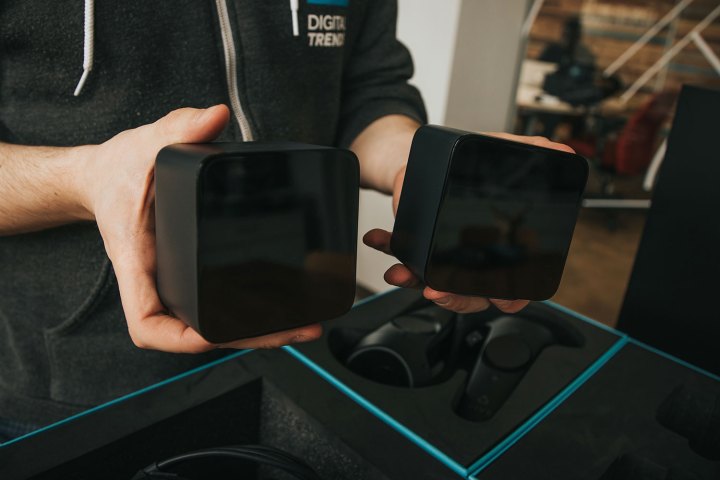
Part of the deal that those developers for SteamVR made was to pay for and complete a licensing course provided by product development firm Synapse. Although that course did set back attendees just shy of $3,000 apiece, it means that there will be no licensing fees or royalties.. Once the course is finished, developers can make any SteamVR hardware they like using Valve patents.
Related: Valve hints at a new SteamVR controller, second-gen Lighthouse system for 2017
While this might sound like Valve trying to get licensing money upfront from companies which may not end up with a completed product, it is more likely aimed at ensuring that people know what they’re doing. With the VR industry in its current fledgling state, the last thing Valve needs are people who don’t know how to make VR a comfortable and marketable experience.
Warning: Synapse has the gain on the following video jacked way too high. Look out for distortion and bleeding ear drums.
Synapse has been offering support for Valve’s own VR developments and now it is in charge of expanding that know-how beyond Valve’s offices. Although it has already given 50 developers the thumbs up to create qualified, professional VR hardware and experiences, many more are interested and in fact, RoadtoVR tells us that course slots in November and December are filling up fast.
If you’d like to be on one of these courses, make sure you sign up now to avoid disappointment.
What does this mean for the rest of us non-developers? It means that the future is bright for Valve’s hardware offerings and APIs, as there are a lot of companies out there now looking to develop new hardware and software to utilize it.
While this will likely lead to new, third-party alternatives to existing hardware, that’s what has helped make other markets healthy and competitive over the long term, so we’re excited to see what developers other than Valve/HTC can come up with in the SteamVR space.



